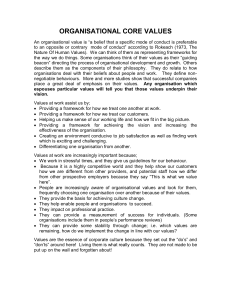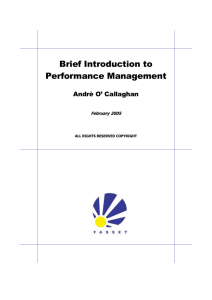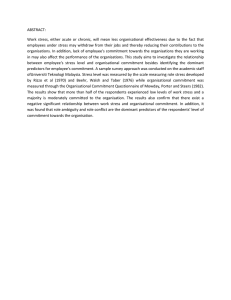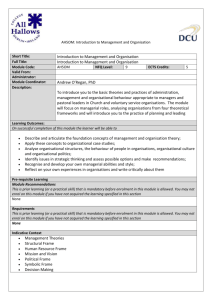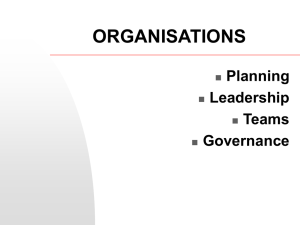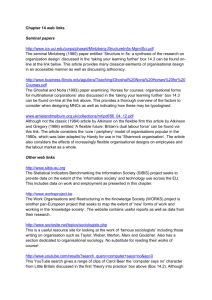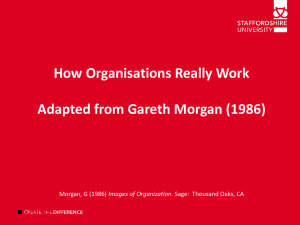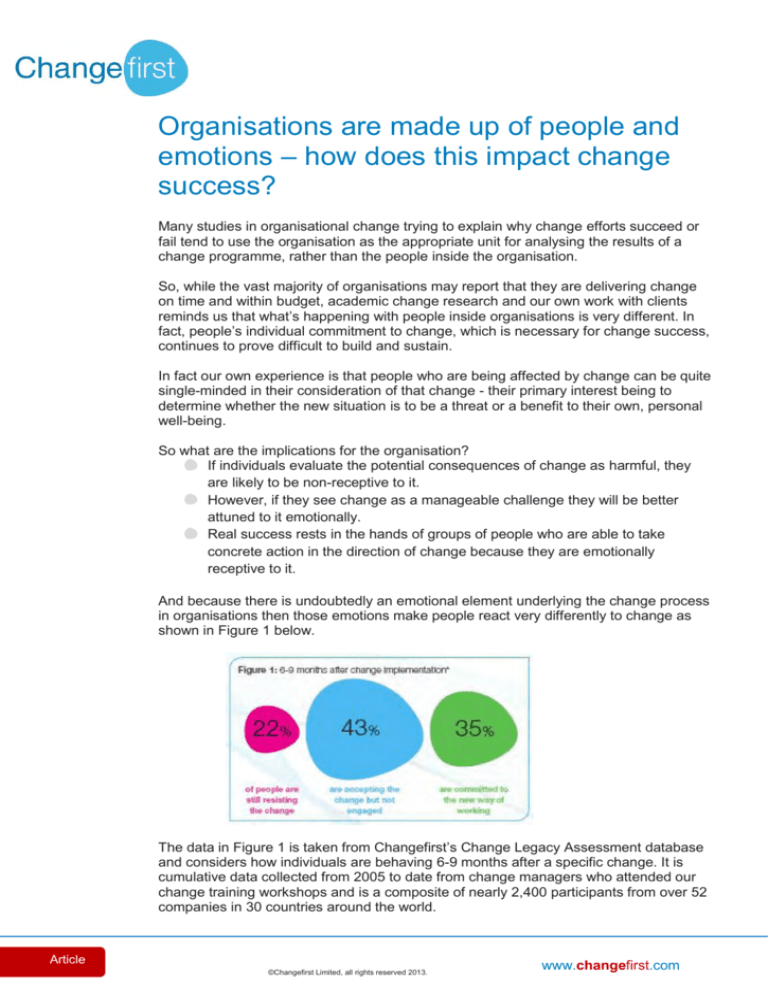
Organisations are made up of people and
emotions – how does this impact change
success?
Many studies in organisational change trying to explain why change efforts succeed or
fail tend to use the organisation as the appropriate unit for analysing the results of a
change programme, rather than the people inside the organisation.
So, while the vast majority of organisations may report that they are delivering change
on time and within budget, academic change research and our own work with clients
reminds us that what’s happening with people inside organisations is very different. In
fact, people’s individual commitment to change, which is necessary for change success,
continues to prove difficult to build and sustain.
In fact our own experience is that people who are being affected by change can be quite
single-minded in their consideration of that change - their primary interest being to
determine whether the new situation is to be a threat or a benefit to their own, personal
well-being.
So what are the implications for the organisation?
If individuals evaluate the potential consequences of change as harmful, they
are likely to be non-receptive to it.
However, if they see change as a manageable challenge they will be better
attuned to it emotionally.
Real success rests in the hands of groups of people who are able to take
concrete action in the direction of change because they are emotionally
receptive to it.
And because there is undoubtedly an emotional element underlying the change process
in organisations then those emotions make people react very differently to change as
shown in Figure 1 below.
The data in Figure 1 is taken from Changefirst’s Change Legacy Assessment database
and considers how individuals are behaving 6-9 months after a specific change. It is
cumulative data collected from 2005 to date from change managers who attended our
change training workshops and is a composite of nearly 2,400 participants from over 52
companies in 30 countries around the world.
Article
©Changefirst Limited, all rights reserved 2013.
www.changefirst.com
What is interesting about the data is that it shows that less than 40% of individuals are
committed to the new way of working.
Each working day, individual employees like the ones in the research above get
together in an organisational context to solve problems and achieve both their individual
and organisational objectives – but all with different levels of commitment to the various
organisational change tasks they are involved in.
In other words, organisations are patterns of human interaction and are not entities that
exist independently of the people that constitute them.
And the process of delivering organisational change starts with new behaviours and
decisions on the part of individuals, who are influenced by a combination of interpersonal
and organisational-level factors. In addition, different parts of the organisation can react
differently to the change initiatives.
This makes your people change plan, just as – if not more – essential than project
plans. As encouraging individuals to engage with change and adopt new behaviours
are key to delivering on your project milestones.
This paper is one of a series on a number of change related topics all of
which are available from the Knowledge Centre on the Changefirst website.
You can also follow our progress in the following ways:
Article
©Changefirst Limited, all rights reserved 2013.
www.changefirst.com

